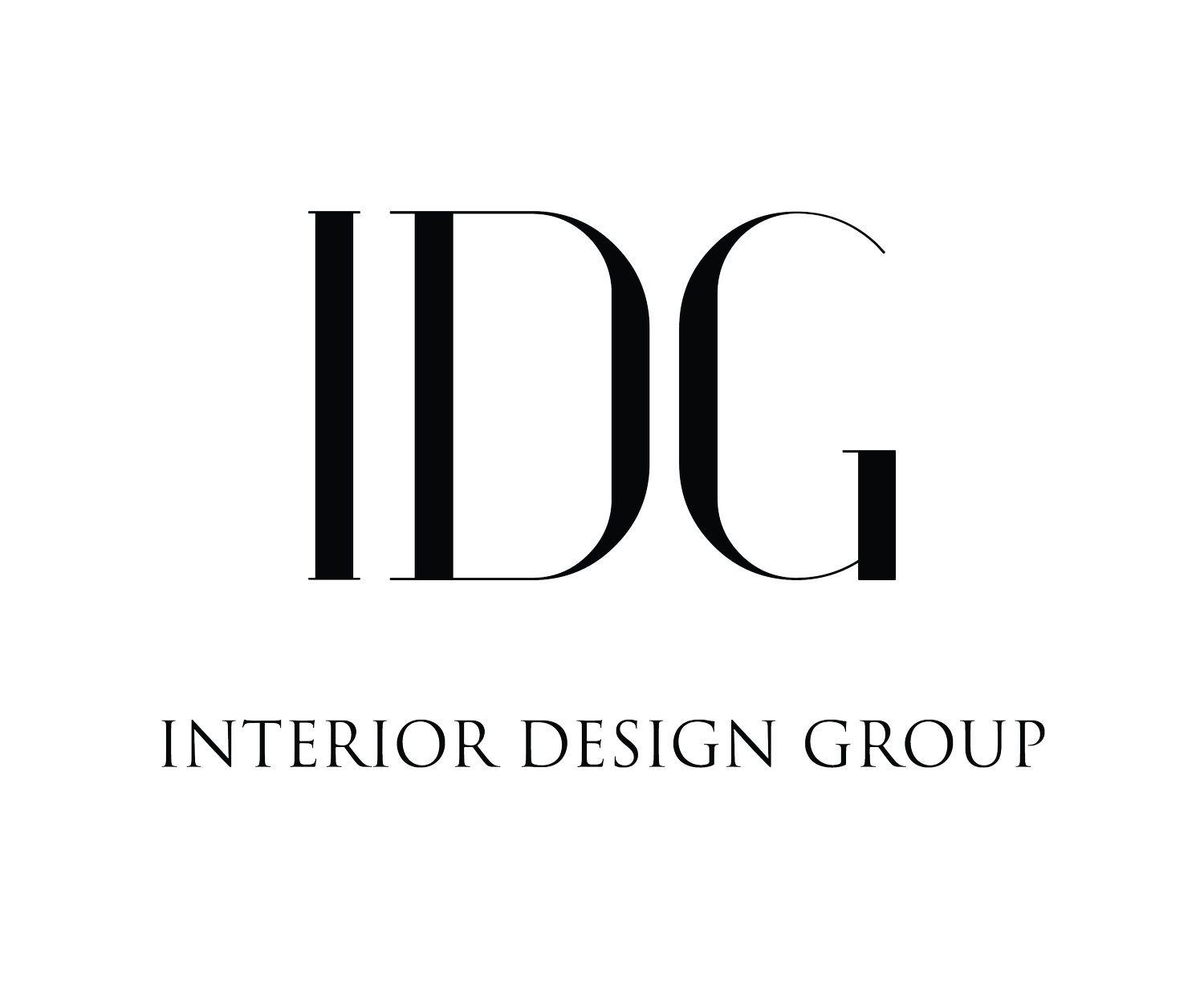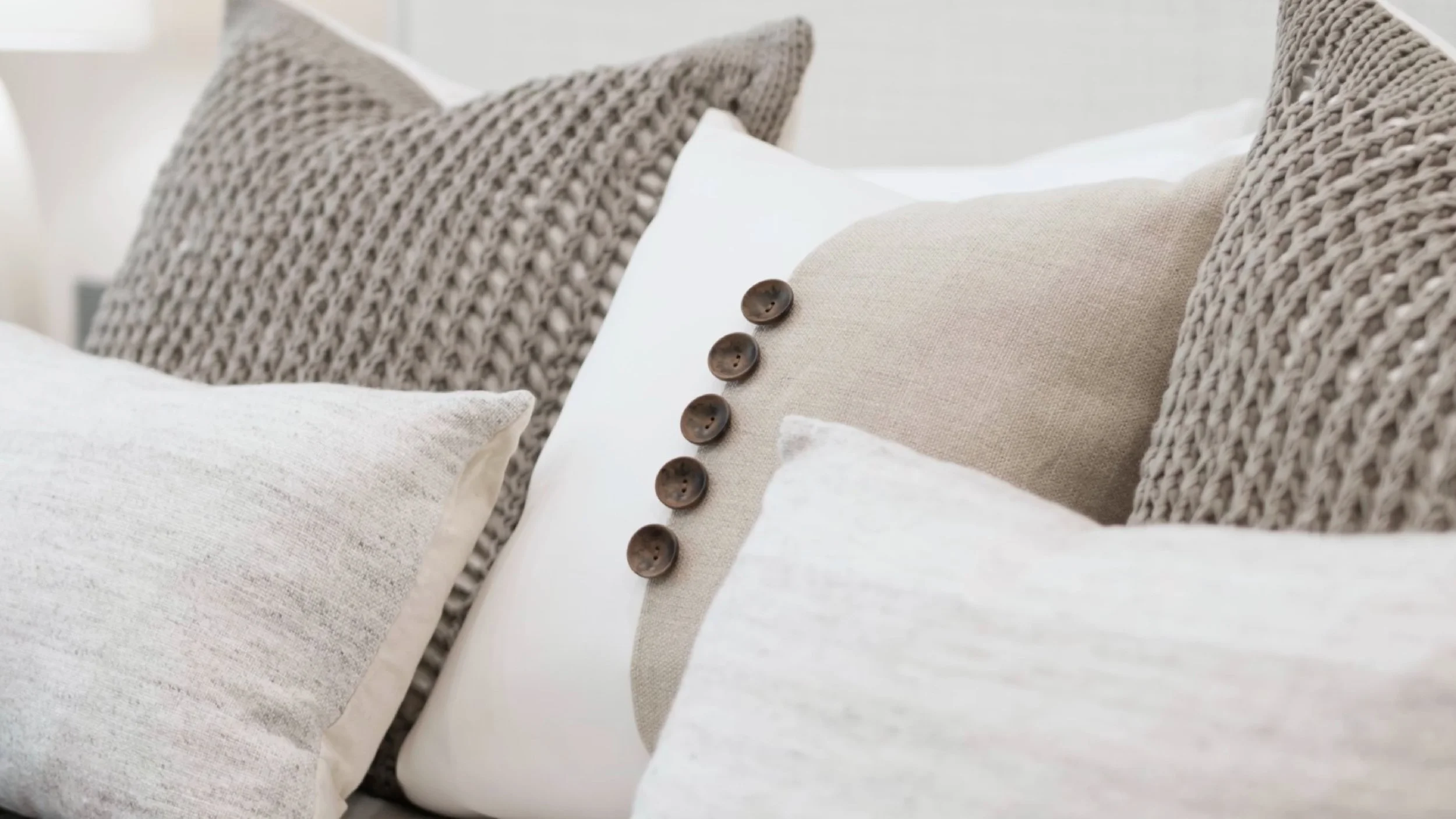the beauty of texture
2024 is set to embrace the captivating world of textures in interior design. Texture, defined as the surface quality of a material, brings a unique dimension to any space. Whether it's the tactile sensation you can feel with your fingertips or the visual appeal that captivates your eyes, textures can create a truly immersive experience. Imagine a room where plush velvet, rugged stone, and sleek metal seamlessly blend, creating a mesmerizing sensory journey. These diverse textures add depth to your space and ignite a sense of visual intrigue. This blog will explore six innovative ways to infuse textures into your interior, elevating your living experience.
IDG pillow arrangement from the Sovereign project.
1. MIXED TEXTILES
Add texture to any room by incorporating a variety of textiles. The possibilities are endless, from rugs and window treatments to throw pillows, blankets, bedding, and upholstery. Get creative and mix fabrics like leather, velvet, silk, bouclé, wool, cotton, and linen to achieve the desired ambiance. Enhance the comfort of a cool leather armchair with a lavish velvet throw pillow. Transform your bed into a cozy haven during cold weather by combining linen sheets, faux fur throw pillows, and a chunky knit blanket.
Park Rublevo living room design by Elder Ismailov.
2. LAYERING
Going hand-in-hand with this idea of combining textiles is the concept of layering. You can create a visually appealing look by layering rugs of various sizes and patterns. Additionally, you can achieve this effect by layering pillows and arranging a vintage tray, a stack of books, or a candle on a side table.
Poster artwork by Desenio.
3. WALL ART
Embrace the popular gallery wall trend and organize a diverse collection of artwork to bring vibrancy and texture to your wall. This option is perfect for those who prefer to avoid painting or adding expensive paneling to their walls for texture. The outcome is a dynamic, curated, impactful, layered display far more interesting than costly traditional art.
Furniture by Bernhardt Furniture.
4. MIX COLOR AND PATTERN
For a visually engaging setting, experiment with combining patterns like stripes, polka dots, checks, plaids, and florals in a complementary color scheme to generate texture. To achieve a monochromatic appearance, play around with different finishes, materials, and shades of one color to incorporate textural intrigue.
Lighting by Kuzco.
5. MULTIPLE LIGHT SOURCES
Lights can add texture to a room and help create more layers. Different light sources diffuse around a room uniquely, highlighting specific areas and setting the mood. Try mixing wall sconces, ceiling lights, and beautiful pendants to add light layers to your space.
3D wall plaster by Atlas Concorde.
6. FINISHES AND MATERIALS
There has been a recent surge in the popularity of textured finishes, like textured wall panels or hand-applied plaster. You can introduce a textural element by incorporating embossed, woven, colorful, or graphic wallpaper onto a plain wall. Pair a formal wooden dining table with upholstered lucite or vintage metal chairs for a more relaxed feel. Use textured tiles for the backsplash in the kitchen, or install a rough-hewn stone sink in your powder room.
Texture is a pivotal part of interior design that can add depth, interest, and personality to any space. Understanding how to use texture in interior design allows you to create a visually and tactilely appealing space. Whether you want to add warmth, create contrast, or draw attention to a particular area, contact IDG and let us assist you in breathing new life into your space with texture.






